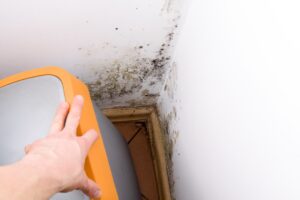Your first instinct when you find mold in your house might be to panic and think the worst. While no household mold is considered “good,”, there are some that release more toxins than others.
Along with causing possible health concerns, household mold causes discoloration on your walls, a dank, musty smell throughout your house, and it’s not visually appealing.
However, most people assume any type of black mold is the infamous “toxic black mold” you’ve heard so much about in the news, but that just isn’t the case.
Even though there are several types of mold that cause adverse health reactions, stachybotrys chartarum is the one you need to watch out for the most.
Stachybotrys Chartarum vs. Black Colored Mold
There’s no real way to escape mold as it grows everywhere. Whether it’s outside your home or in the confines of your walls, there’s more than likely some type of mold spores present. While there’s no solid number on how many varieties of mold exist, it’s estimated to be between 10,000 to hundreds of thousands.
The good news is that most of these varieties are harmless to humans. That mold you’ve seen growing in the corner of your bathtub is most likely not causing you any problems, and while you don’t want to eat moldy bread, if you find a leftover loaf in your pantry that’s covered in mold, there’s no need to panic.
However, if you notice a damp, musty odor in your basement, on your drywall or even on your insulation, your best move is to get it checked out by a professional. If it does happen to be stachybotrys chartarum, it can cause a bevy of health issues ranging from respiratory effects such as coughing or sneezing, to migraines and more.
What Kind of Mold Do I Have?
There are no tests you can run on your own to determine what kind of household mold is growing in your home. For this, you’ll need a professional mold removal team to come take samples of any spores they find on various surfaces of your home.
After the samples are collected, they’ll be sent to a lab and analyzed. The results will vary on the spore levels depending on how serious your mold problem is, but regardless, the mold will have to be removed.
Contact Us
We like our customers to be informed so if you do reach out to us, we’ll do our best to explain the mold removal process and come up with an individualized plan that works best for you and your family. If you have any questions, or aren’t sure if you have mold at all, give us a call. We’d love to help you out!







